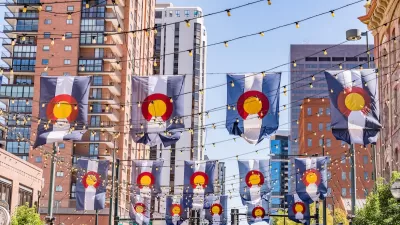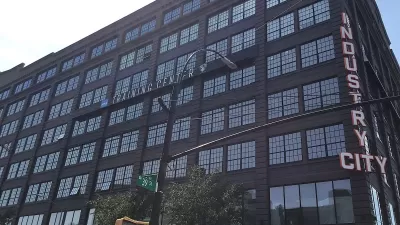For other cities struggling with sky-high real estate prices, Colorado’s resort town offers some instructive lessons on what’s working — and what isn’t.

The first time Jenny Stuber ever visited Aspen, it was on rock legend John Denver’s private jet, called the “Windstar.” She had been living with her mother, on welfare and eligible for free-and-reduced lunch at school. But when her father moved to Aspen in 1976, she began to visit him in the summers. Aspen introduced her to a new world — one of extreme contradictions. Whereas many locals, like her father, were able to get by on middle-class salaries and lived in affordable homes, others spent $2 million on second, third, or even fourth homes. This experience, in part, inspired her to become a sociologist, and to turn her lens on questions of social class and how it’s formed.
In her new book, “Aspen and the American Dream: How One Town Manages Inequality in the Era of Supergentrification,” Stuber, an associate professor of sociology at the University of North Florida, explores how the Aspen of her childhood has shifted in an era of “supergentrification.” While the city has managed to maintain a working middle class, thanks in large part to an affordable housing program established in the 1970s, progressive political leadership and creative urban planning, moneyed interests threaten to tip the scales in favor of high-end development. In 2016, the City Council announced a complete moratorium on development. Over 10 months, it rewrote the land-use code to favor residents over developers.
Stuber spoke with Next City about her book, what supergentrification looks like on the ground, and what other cities and communities can learn from places like Aspen. This interview has been lightly edited.
FULL STORY: Can Cities Be Saved From ‘Supergentrification’? Aspen May Offer a Roadmap

Maui's Vacation Rental Debate Turns Ugly
Verbal attacks, misinformation campaigns and fistfights plague a high-stakes debate to convert thousands of vacation rentals into long-term housing.

Planetizen Federal Action Tracker
A weekly monitor of how Trump’s orders and actions are impacting planners and planning in America.

In Urban Planning, AI Prompting Could be the New Design Thinking
Creativity has long been key to great urban design. What if we see AI as our new creative partner?

King County Supportive Housing Program Offers Hope for Unhoused Residents
The county is taking a ‘Housing First’ approach that prioritizes getting people into housing, then offering wraparound supportive services.

Researchers Use AI to Get Clearer Picture of US Housing
Analysts are using artificial intelligence to supercharge their research by allowing them to comb through data faster. Though these AI tools can be error prone, they save time and housing researchers are optimistic about the future.

Making Shared Micromobility More Inclusive
Cities and shared mobility system operators can do more to include people with disabilities in planning and operations, per a new report.
Urban Design for Planners 1: Software Tools
This six-course series explores essential urban design concepts using open source software and equips planners with the tools they need to participate fully in the urban design process.
Planning for Universal Design
Learn the tools for implementing Universal Design in planning regulations.
planning NEXT
Appalachian Highlands Housing Partners
Mpact (founded as Rail~Volution)
City of Camden Redevelopment Agency
City of Astoria
City of Portland
City of Laramie





























